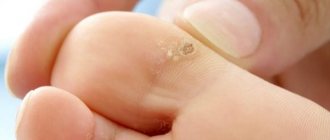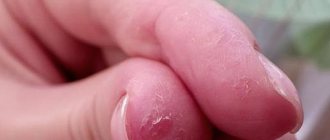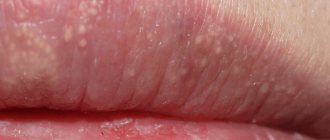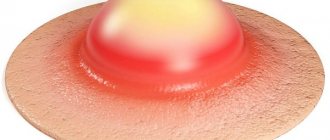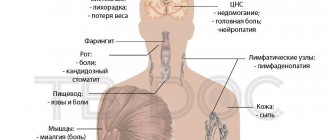Often the skin on the feet becomes coarser and becomes a characteristic yellowish tint - corns appear on the toes, they may not hurt and do not cause any inconvenience, except for a visually unaesthetic appearance. But it is still recommended to treat them without waiting for unpleasant consequences to appear in the form of calluses with a core.
Corns on fingers
What is a corn?
Patches of dry, yellow skin on the toes are called dry calluses or calluses. Rough skin appears in areas of regular compression or friction of the foot as a result of necrosis of the surface layer of the epidermis. Dead cells accumulate and form a stratum corneum, on which small cracks appear.
Corns on the toes are not an independent pathology; compacted areas are manifestations of other diseases. In a calm state, the keratinized formations do not appear in any way; pain or a tingling sensation occurs while walking. Experiencing slight discomfort, many are in no hurry to clear their feet of calluses, not suspecting that seemingly harmless dry skin can cause the addition of fungus or the development of trophic ulcers.
Localization Features
Corns are callous formations classified into 3 groups:
- Wet calluses. They form rapidly due to increased pressure on a small area of the body, and are characterized by redness and the formation of a bubble with a clear liquid inside. Local treatment includes puncturing the bladder and treating the wound with antiseptics. Localized mainly on the heels and little toes.
- Dry calluses. Condensations of dead cells with uneven edges, yellowish-gray color, and slight hyperemia of the surface. Localized on the heels, balls of the feet, big toes and the outside of the little toes. At school age, a dry callus appears on the extreme phalanx of the middle finger of the right hand; a ballpoint pen rests on this place, exerting strong friction on the finger while writing.
- Dry core calluses. Corns, in the center of which you can see a light rod with a head on top, penetrating deep into the tissue. It should be removed with the participation of a dermatologist or salon specialist. The difficult thing to remove is to get rid of the rod. The preservation of the rod after treatment indicates that the growth could not be removed. The defects are located on the pads of the feet, the interdigital space, and the outer side of the little toes.
The corn itself will not disappear, but simple manipulations to eliminate it will put your feet in order. You need to systematically and purposefully get rid of rough skin on your feet. This approach will remove unpleasant growths from the soles.
Reasons for appearance
Dry calluses most often bother the female half of the population. This fact is associated with wearing dress shoes, as well as with frequent cases of transverse flatfoot. Identification of a corn makes the patient want to remove it as quickly as possible, but it is pointless to carry out treatment procedures without finding out the cause. Without eliminating the provoking factor, after a short period of time, the corns will appear again.
Main reasons:
- Wearing shoes with a narrow last, tight in the toe part, high heels, made of synthetic materials, in which air exchange is disrupted and sweating increases against the background of decreased microcirculation in the front of the foot. In response to unfavorable conditions, necrotic areas appear, in place of which a corn forms.
- Dropping of the arches of the feet (flat feet) leads to improper distribution of the load on the foot. The foot bends and areas that are not intended for support succumb to pressure. An adaptive reaction occurs when rough areas act as protection for the thin skin of the fingers.
- When wearing shoes that are too tight on the lateral surfaces of the first and fifth toes. In addition to the wrong shoe size, the cause may be hallux valgus or varus curvature of the little toe.
- Endocrine pathology, in particular diabetes mellitus, can become a trigger for the formation of dry calluses. In this case, the appearance of corns on the toes is associated with metabolic disorders against the background of increased glucose levels in the blood.
- Increased body weight creates additional overload for the distal lower limb (foot).
- The fungus, which parasitizes the skin of the feet, is localized between the toes, in the skin folds. The development of fungal infection is facilitated by a moist environment and dead epithelial cells, which is favorable soil for their reproduction and vital activity. Dry calluses on the side surface appear precisely due to mycoses.
- Vascular diseases (atherosclerosis), during which circulatory deficiency occurs in the lower extremities.
- Hydrolysis – increased sweating of the feet.
- Severe stress shocks lead to disruption of metabolic processes at the cellular level. One of the consequences is a corn on the first toe.
Supporters of alternative medicine regard the condition of the skin of the feet as an indicator of diseases of the internal organs. Places where corns appear are associated with developing pathology.
In their opinion, a dry area on the little toe of the right foot indicates liver disease, on the fifth toe of the left foot - diseases of the cardiovascular system, and a callus on the big toe appears in cases of thyroid disorders or diabetes mellitus.
How to quickly get rid of calluses on your feet?
The second type of consequence of wearing tight shoes is water (wet) calluses. The fastest way to get rid of them is with a puncture. This method is controversial, since if the callus is damaged, there is a chance of infection. However, it cannot be denied that calluses freed from fluid heal much better than those that are not punctured.
If you nevertheless decide to “dry” the callus, then take care of sterility in advance: thoroughly wash your hands and the problem area itself, heat the tip of the needle over a fire or disinfect it with alcohol, prepare a napkin/gauze disinfected with an antiseptic to absorb the ichor from the callus.
After the callus is punctured, it must be treated with antimicrobial ointment and sealed with a medicinal plaster. At night, you can additionally apply products that accelerate tissue regeneration.
Symptoms
Corns on the toes form gradually. At the first stage, the skin reacts to constant irritation with redness and slight swelling. In places of compression, hemodynamics slows down, and cells begin to experience a lack of nutrients and oxygen starvation. As a result, the damaged layers of the epithelium become layered and lose sensitivity, resulting in the formation of a rough yellow area.
Usually, painful sensations appear during physical activity. The localization of dry calluses on the fingers is characterized by an increased pain effect with numerous cracks that cover the dehydrated skin. Damaged areas can serve as entry gates for pathogenic microorganisms, which leads to the addition of a pustular infection. In this case, in addition to suppuration, the general condition worsens.
Neglected forms turn into massive formations that hurt and acquire a grayish tint. If darkening of the skin is combined with a light coating resembling flour, fungal microflora may be actively involved in the pathological process. Corns on the toes are especially dangerous during the development of a pathological condition such as diabetic foot, when trophic ulcerations can form on the affected areas, which are difficult to treat.
When should you see a doctor?
If an ordinary wet callus has formed on your little finger, you can cure it yourself, at home. In the absence of suppuration or inflammation, there is no need to consult a doctor.
However, if the callus is a core formation that protrudes strongly above the surface of the skin, interfering with walking, if the callus is large in size or has changed color to a darker one, you should consult a doctor. Perhaps in this case we are not talking about a callus, but about a wart, papilloma, or other neoplasms.
A specialist must conduct a thorough examination of the biomaterial and determine what type of callus you have formed. And then prescribe competent and appropriate treatment for the diagnosis.
Treatment with pharmaceuticals
Therapeutic procedures for corns are aimed at removing dead skin layers. You can get rid of dry calluses in a beauty salon using a hardware pedicure and at home using anti-callus products that soften the skin. The use of folk recipes in the form of baths and compresses will also be effective.
In a hospital setting, medical specialists offer corns drilling, laser removal, and cold exposure. Any procedure does not cause pain, and local anesthesia is prescribed only in exceptional cases. Hardware methods help to reliably get rid of corns on the toes.
Keratolytic agents
The modern pharmaceutical industry offers a large selection of treatments. The most popular in the line of anti-callus agents are keratolytic agents, which soften and dissolve horn cells. Available in the form of ointments or creams. The external product contains salicylic acid, which easily removes necrotic areas. An addition to the main medicinal substance can be lanolin, petroleum jelly or herbal ingredients.
Popular means:
- Namosol 911 - a cream with salicylic acid and urea, in addition to the keratolytic effect, has a bactericidal and healing effect.
- Super antimozolin with urea and lactic acid softens and moisturizes problem areas well.
- Healer - contains urea, prevents inflammation and effectively removes even the most stubborn corns.
- Belosalik is a product that combines the glucocorticosteroid Betamethasone and salicylic acid. Additional properties include an anti-edematous effect.
- Keratolan - cream with urea softens rough areas and fills cells with moisture.
For greater effectiveness, before using a cream or ointment, you need to prepare your feet using a foot bath. To do this, use warm water, adding sea salt, ammonia, chamomile infusion or laundry soap. The foot bath is carried out for 15 minutes, after which the feet are dried and anti-callus cream is applied. Following the instructions, the product is kept on the skin, after which the softened corns on the toes are cleaned with a special brush.
Plasters
The use of patches with a medicinal base is considered the simplest and most convenient method of removing rough skin. It is possible to get rid of corns in this way within seven days. The main condition for achieving optimal results is regularity of procedures. Despite all the advantages, the patches can cause irritation and a local allergic reaction.
Popular patches:
- Compeed are convenient, specially shaped patches designed to remove dry calluses on the toes; they not only have a softening effect and relieve pain in the affected area.
- Salipod is a patch with salicylic acid; when applying it, you need to make sure that the effect of the patch does not spread to healthy areas of the skin in order to avoid severe irritation.
Traditional methods
To combat dry calluses, recipes tested over many years of experience have long been used. Corns can be easily removed if your feet are steamed first.
Hot foot baths are recommended before each manipulation, regardless of which product is chosen as the basis.
Hydrogen peroxide
Rubdowns or foot baths with 3% hydrogen peroxide help in a short period of time. To prepare an exfoliating solution, pour 80 ml of hydrogen peroxide into two liters of warm water. When choosing the wiping method, a napkin is immersed in the solution and wiped over the dry callus. When fully immersing your feet for a therapeutic bath, it is recommended not to exceed the procedure time for more than 10 minutes. The procedure must be carried out for three days in a row, after which a break is provided to prevent drying of the skin.
Epsom salt
A powdered compound called magnesium sulfate or Epsom salt is commercially available. Calluses on fingers can be easily cleaned by taking a hot bath with a tablespoon of Epsom salt. The duration of the water procedure is usually 30 minutes, during which time it is necessary to maintain the temperature so that the water does not cool down. At the end, the softened skin is cleaned with a brush or pumice stone, after which the feet are dipped in clean water and softened with a nourishing cream.
Onion
Onions have a pronounced antiseptic and keratolytic effect. Essential oils and trace elements reduce sweating and fight unpleasant odors. To remove corns, simply chop the onion coarsely and fix it on the affected area. Since it is inconvenient to apply part of the onion to your fingers, you can chop it up and apply the pulp to a dry callus, wrapping it in film. The effect of the compress should be at least one and a half hours.
Baking soda
Sodium bicarbonate (baking soda) has long been known for its abrasive and odor-absorbing properties. When treating corns, several methods are used to remove compressed epithelium:
- Grind the laundry soap and combine with a teaspoon of soda. Use the resulting mixture as a compress, leaving for 20 minutes.
- Dissolve two tablespoons of baking soda in warm water (2 liters) and soak your feet for 15 minutes.
- Add thirty grams of soda to two liters of milk heated to a temperature of 38 degrees and stir. Keep problematic legs in a soda-milk solution for a quarter of an hour.
- A mixture of olive oil and baking soda is used in the form of a scrub. Mix a teaspoon of oil with a tablespoon of soda and rub into a dry callus.
Honey
Treatment with a honey compress is recommended for people who are not prone to allergic reactions. For the healing base, a combination of honey and viburnum berries is used, which improve the regeneration of epithelial cells. The optimal time for the therapeutic effect of the compress is 30 minutes. For the softening mixture you will need 60 grams of crushed viburnum berries and 100 ml of fresh honey. After half an hour, the softened skin is cleaned, a moisturizer is applied and cotton socks are worn at night.
Prevention
Removing dry calluses does not guarantee a complete cure. Corns on the toes will appear again if prevention is not carried out by eliminating the source of the pathology:
- wear high-quality shoes made from natural materials;
- use orthopedic insoles to unload the feet;
- use silicone bunion protectors and heel pads to prevent chafing of the feet;
- monitor your weight and prevent the appearance of extra pounds;
- avoid heavy physical activity;
- regularly carry out cleansing procedures for the skin of the feet;
- treat chronic diseases in a timely manner.
The appearance of corns is always associated with concomitant pathologies. Therefore, if, after successfully getting rid of dry calluses, frequent relapses occur, it is advisable to visit an endocrinologist or dermatologist for differential diagnosis and prescribing the correct treatment.
Preventive measures
Let's find out what measures can be taken to prevent the formation of calluses on the little toes.
- Be responsible when purchasing new shoes. Don’t be tempted by beautiful but tight shoes: problems with your feet from long (and sometimes short-term) wearing of such shoes are guaranteed. If you have already purchased a slightly tight pair, try to first wear it at home with a sock, and only then put it on your bare leg when going out.
- It is recommended in the hot summer to wear shoes made of genuine leather that allow air to pass through well.
- If you know that calluses often form on the little toes , when wearing closed shoes, you can seal your toes with a plaster on the sides and top.
So, we looked at the features of the formation and treatment of calluses on the little fingers. As you can see, this problem is a common occurrence, however, you should not be afraid of it.
Modern medicine and pharmaceuticals provide every opportunity to stop the problem in a short time. Yes, and traditional medicine contributes to this.
However, it is recommended to take preventive measures so that this problem does not appear in principle: this approach is much more prudent.

